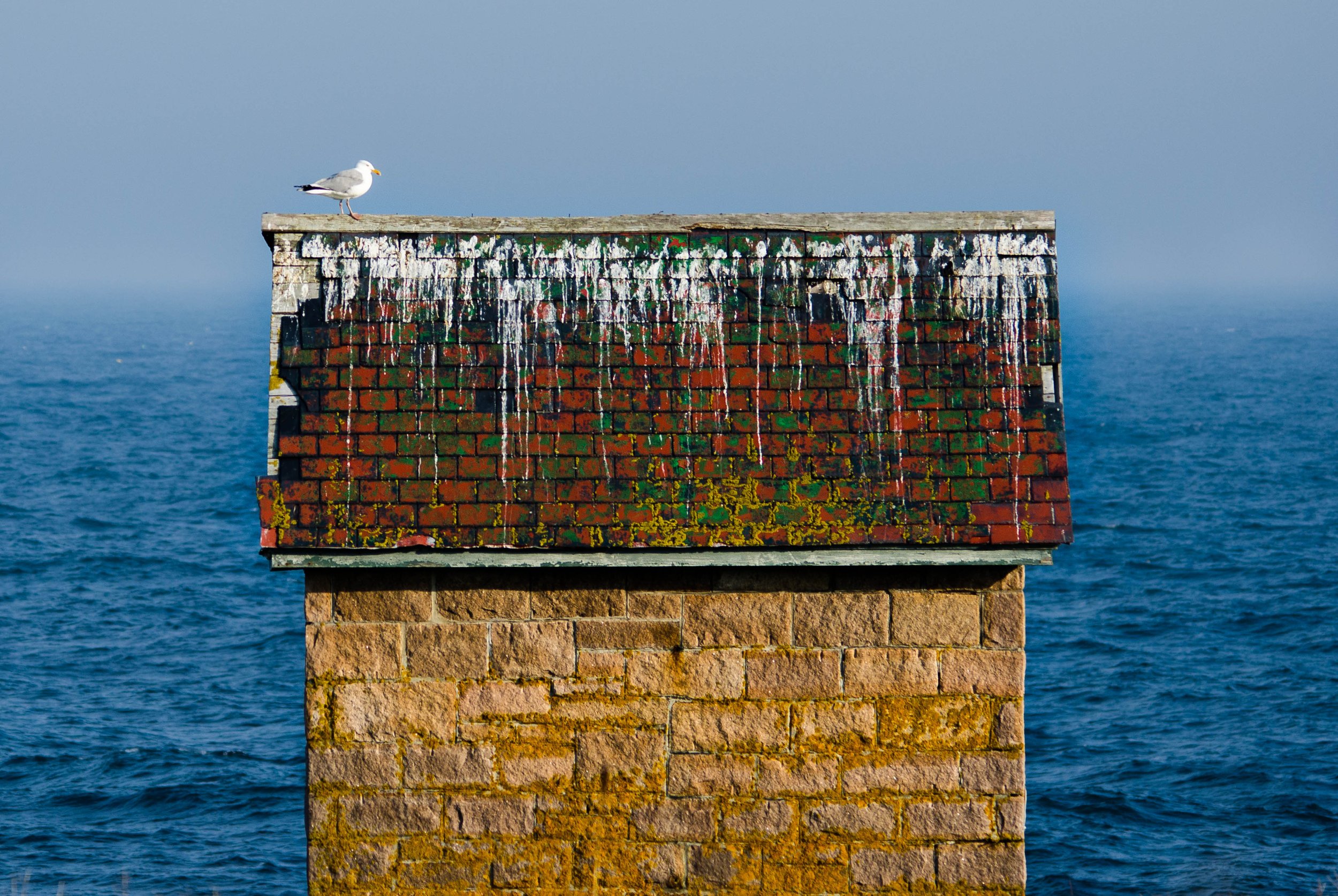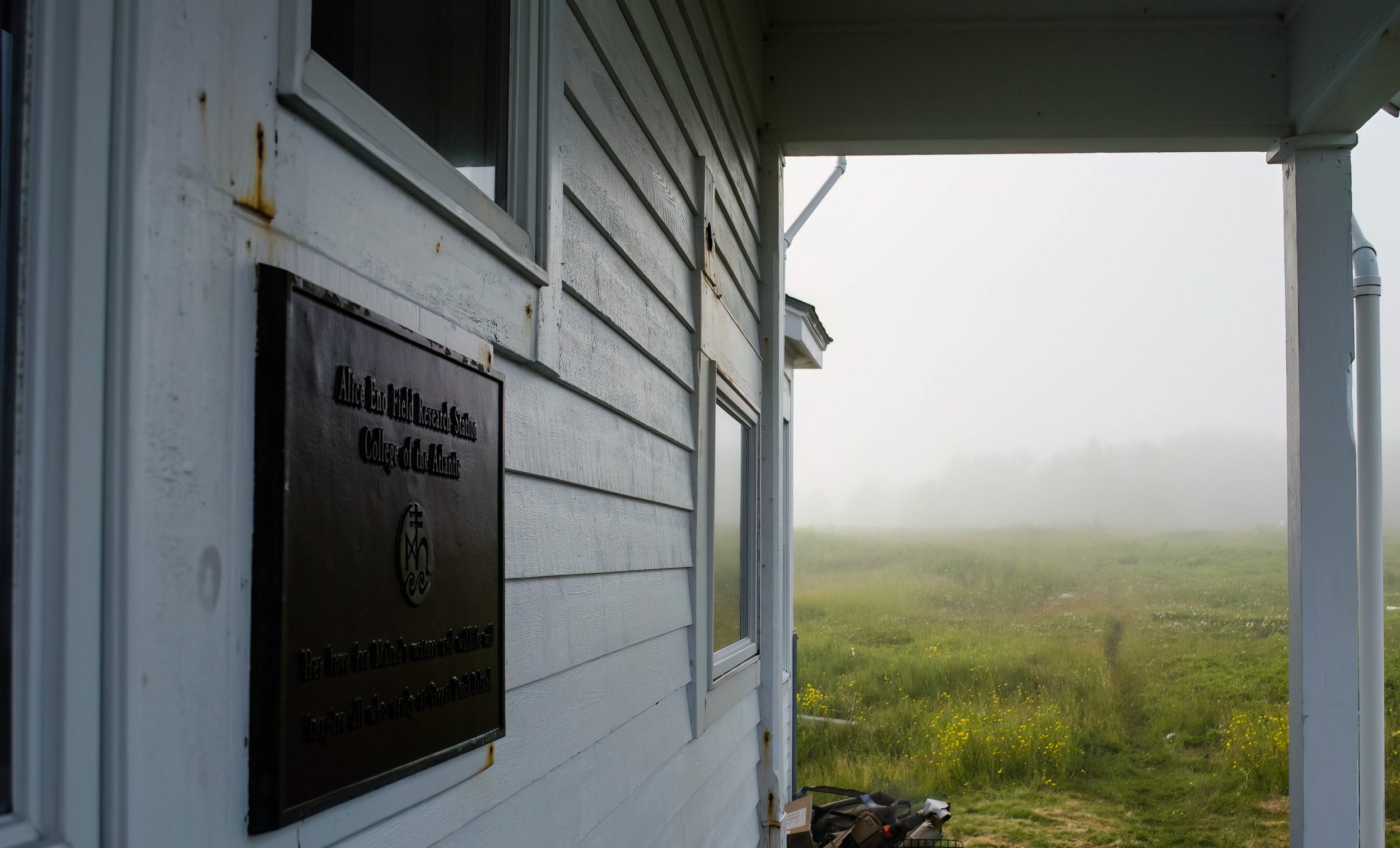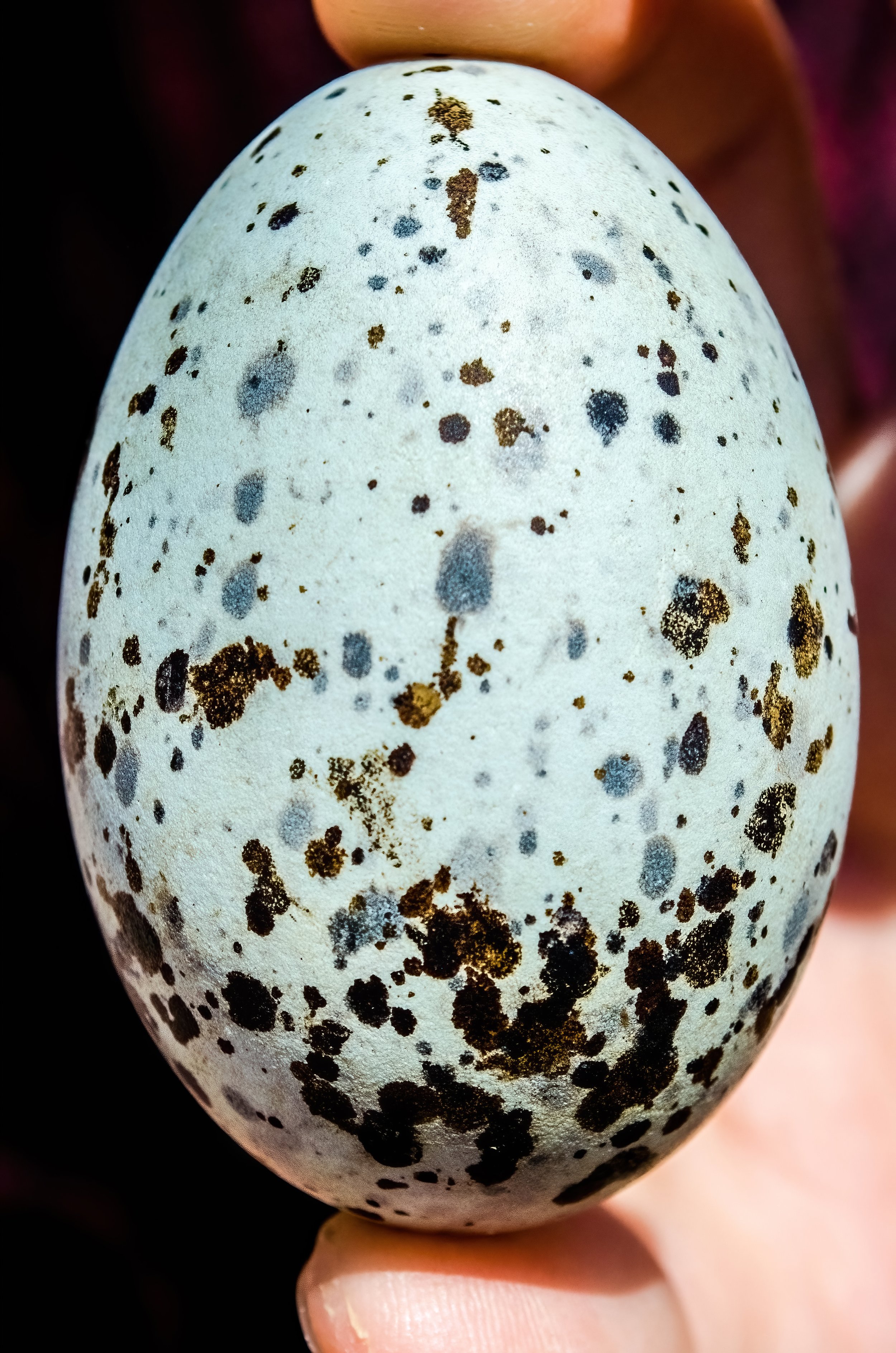
Islands are important living laboratories for scientists, especially to document change in our dynamic environment.
“In 1998, COA acquired twelve acres of Great Duck, sharing the rest of the island with the Nature Conservancy, the State of Maine, and a summer resident.”
“There's an almost eerie quiet to an offshore island. Walk just a few steps inland from gull cries and wave surges and you can hear the flight of insects within the silence. Spend time and the island begins to reveal itself: which bird nests where, what rocks are stable, how field merges into forest. Eventually, it almost seems possible to sense with the eye of a gull or guillemot. So it is with COA's "ducklings," the students who spend the seabird breeding season on the narrow, mile- long Great Duck Island some eighteen miles south of campus. Here the nocturnal Leach's storm petrel and plump black guillemot flock to breed each summer—more here than to any other known locale in the eastern US. Herring and black-backed gulls along with eiders also nest on the island, joined recently by the Atlantic puffin.”
-Kate Shlepr for the College of the Atlantic Magazine
November 16, 2015






All images taken for this story by Nina Duggan.
Published story written by Kate Shlepr for the College of the Atlantic Magazine.
First published in the College of the Atlantic Magazine, Volume 11, No. 2., Fall 2015.